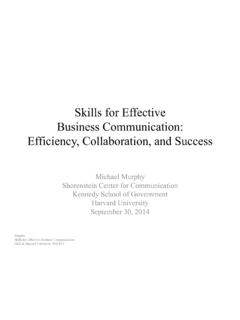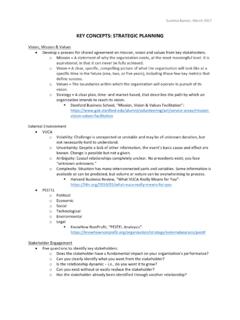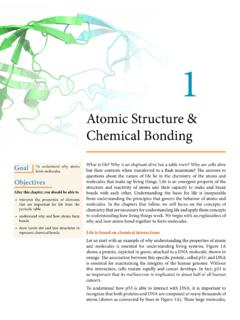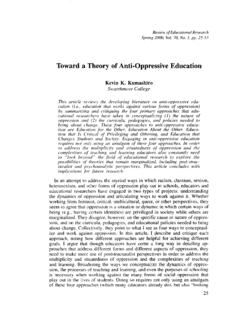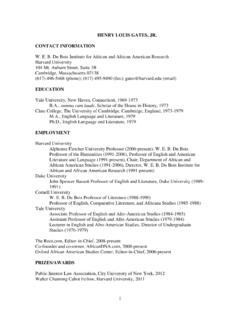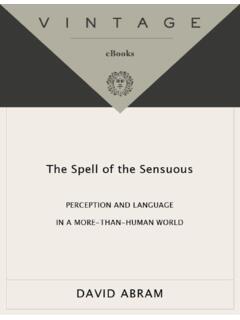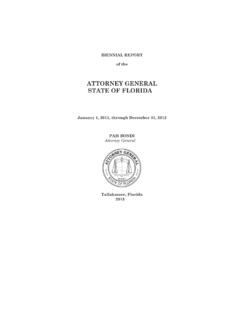Transcription of HARVARD UKRAINIAN STUDIES - Projects at Harvard
1 HARVARDUKRAINIAN STUDIESV olume VI Number 4 December 1982 UKRAINIAN Research InstituteHarvard UniversityCambridge, MassachusettsA generous subsidy toward the publication of this issuehas been provided by theJarema S. Kurdydyk Trust of the UKRAINIAN STUDIES Fund, editors assume no responsibility forstatements of fact or opinion made by 1984, by the President and Fellows of HARVARD CollegeAll rights reservedISSN 0363-5570 Published by the UKRAINIAN Research Institute of HARVARD University,Cambridge, Massachusetts, by the HARVARD University Printing OfficeThis issue typeset by Imprimerie Orientaliste, Louvain, Belgium;Brevis Press, Bethany, Conn.
2 ; and the Computer Based Laboratory, HARVARD Hunnic Language of the attila Clan 428 OMELJAN PRITSAKN ikolaj Leskov's Reminiscences of Kiev: Examples of hisMemoir Style 477 CATHERINE D. BOWERSBIBLIOGRAPHIC STUDIESB eauplan's Description d'Ukranie: A Bibliography of Edi-tions and Translations 485A. B.
3 PERNAL and D. F. ESSARREVIEW ARTICLESThe Publication of Documents on the Crimean Khanate inthe Topkapi Saray : New Sources for the History of theBlack Sea Basin 500 VICTOR OSTAPCHUKREVIEWSA. M. Schenker and E. Stankiewicz, eds., The SlavicLiterary Languages (Bohdan Struminsky) 529 Assya Humesky, Modern UKRAINIAN (Victor A. Friedman) 531 George G. Grabowicz, The Poet as Mythmaker: A Study ofSymbolic Meaning in Taras Sevcenko (Ladislav Matejk ) 533 Ivan Franko, The Master's Jests, translated by RomanTatchyn (Jaroslav Rozumnyj) 536 Dymitri Zlepko, Der grosse Kosakenaufstand 1648 gegen diepolnische Herrschaft: Die Rzeczpospolita und das Kosak-entum in der ersten Phase des Aufstandes (A.)
4 B. Pernal) 539 Robert A. Kann, A History of the Habsburg Empire, 1526-1918 (Paul R. Magocsi) 542 Andrei S. Markovits and Frank . Sysyn, eds., Nationbuild-ing and the Politics of Nationalism: Essays on AustrianGalicia (Lawrence D. Orton) 544 Volodymyr Vynnychenko, Shchodennyk, vol. 1: 19 - 922,edited by Hryhory Kostiuk (James E. Mace) 548 Michael Malet, Nestor Makhno in the Russian Civil War(Jos V.
5 Casanova) 549 James William Crowl, Angels in Stalin's Paradise: WesternReporters in Soviet Russia, 917-1937. A Case Study ofLouis Fischer and Walter Duranty (James E. Mace) 552 Lucy S. Dawidowicz, The Holocaust and the Historians(Michael R. Marrus) 553 William A. Czumer, Recollections about the Life of the FirstUkrainian Settlers in Canada, translated by Louis Lay-chuk; Peter d'A.
6 Jones and Melvin G. Holli, eds., Eth-nic Chicago; Jars Balan, ed., Identifications: Ethnicityand the Writer in Canada (Andrij Makuch) 556 INDEX TO VOLUME VI (1982) 559 CONTRIBUTORSO meljan Pritsak is Mykhailo S. Hrushevs'kyi Professor of UKRAINIAN His-tory and director of the UKRAINIAN Research Institute at D. Bowers received a in Russian from Bryn Mawr Collegein 1979 and is now with the Soviet Interview Project at the Universityof B.
7 Pernal is associate professor of history at Brandon University, Bran-don, F. Essar is associate professor of French at Brandon Ostapchuk is a candidate in Altaic and Inner Asian STUDIES atHarvard UKRAINIAN Studiesvolume VI, number 4 December 1982 The Hunnic Language of the attila ClanOMELJAN PRITSAKCONTENTSI ntroductionA. The SourcesB. Analysis of the Onomastic Material (nos. 1-33)I. Names of members of the dynasty (1. Balamur;2. Basi ; 3. Kiirsig; 4. ldin;5. Donat; 6. QaraT n;7. Munguq; 8.)
8 Kt r; 9. Hr- g ; 10. y Bars;11. Es Q m; 12. Blid ; 13. attila ; 14, Ata Q m;15. Mamas; 16. Laudar ais; 17. Ell g; 18. Detjir g;19. Hern k; 20. Етпэсиг; 21. lcind r; 22. Gesam;23. Mun u; 24. Elmingir; 25. Elminc r)II. Names of leading Hunnic statesmen and officers ca. 448-449(26. ЛЛЙ/И; 27. Атг/fc; 28. Ed k n; 29. Cerk n; 30. j/e;31. Krek n; 32. neg si; 33..Sfcett )C. Linguistic and Philological ScrutinyI. OrthographyII. Phonology (1. consonantism in general; 2. consonantic medial clusters;3. vocalism)III.
9 Phonemic Changes (1. vocalism; 2. consonantism; 3. consonantic assimi-lations)IV. Materials to a Hunnic Grammar (1. stems; 2. suffixes; 3. stress)D. Concluding RemarksIndices: 1. Index Verborum2. Index of SuffixesAppendix : Genealogy of attila 's ClanAbbreviationsIntroductionIn about 370, a nomadic people called the Huns invaded EasternEurope. Coming from the East, and having subjugated the Ostrogothicrealm of Hermanarich, they established a nomadic empire which soonstretched to the Roman Danubian limes. The Hunnic empire reached itsapex under the leadership of attila (444-453).
10 In 451, however, Attilawas defeated in the "Catalaunian fields" in Gaul by the united forcesof the Romans and the Visigoths. His sudden death two years laterwas followed by an internal power struggle among his sons duringwhich the empire's subjugated peoples mainly the Germanic Gepidae,HUNNIC LANGUAGE OF THE attila CLAN 429 Ostrogoths, and Heruli revolted successfully. A great battle fought in455 on the still unidentified Pannonian river Nadao put an end to theHunnic empire's unity and some time later, as we learn from Jordanes, groups of Hunsreturned to their "inner" territory on the river V r (= Dnieper) in theUkraine.
